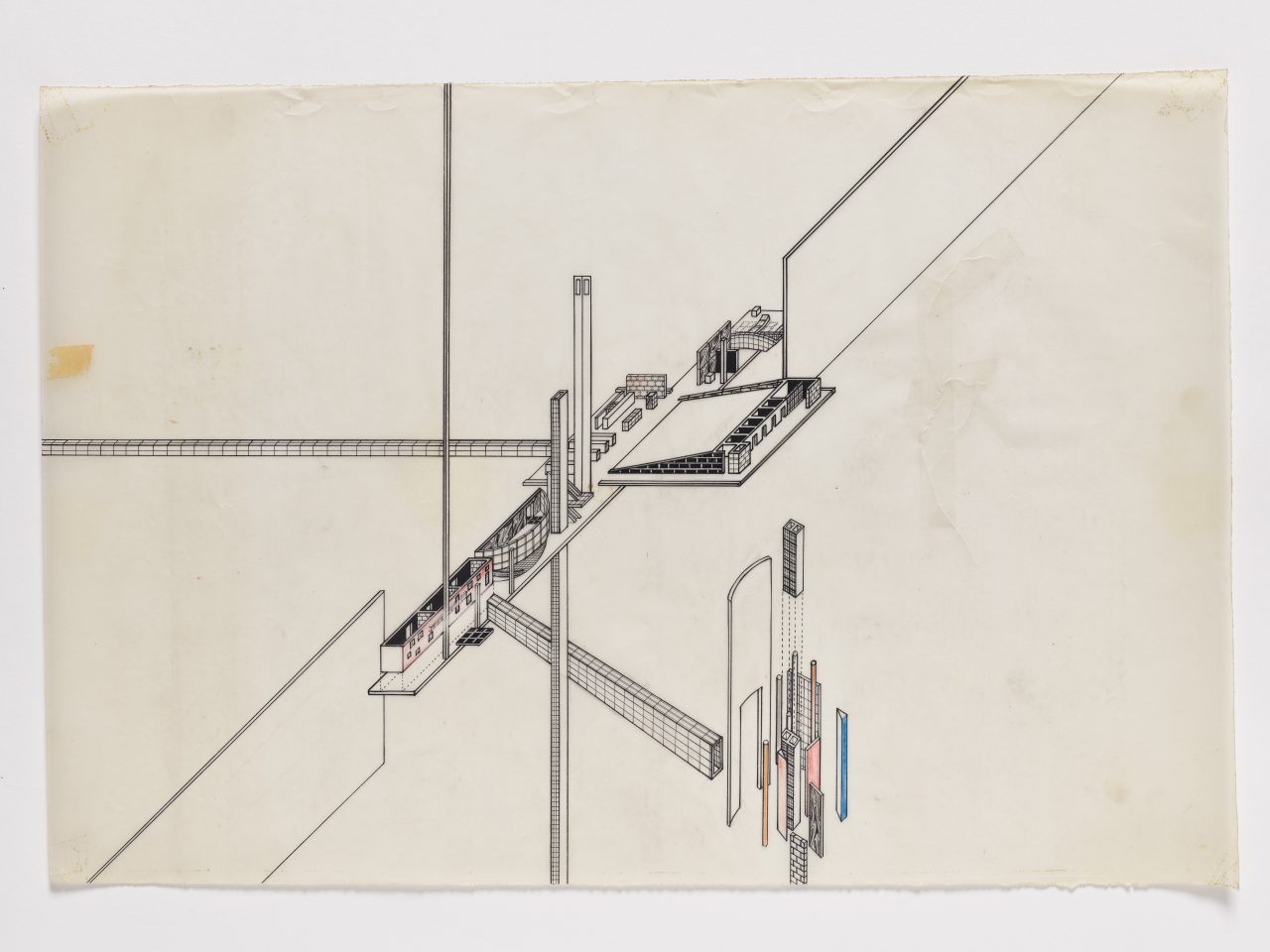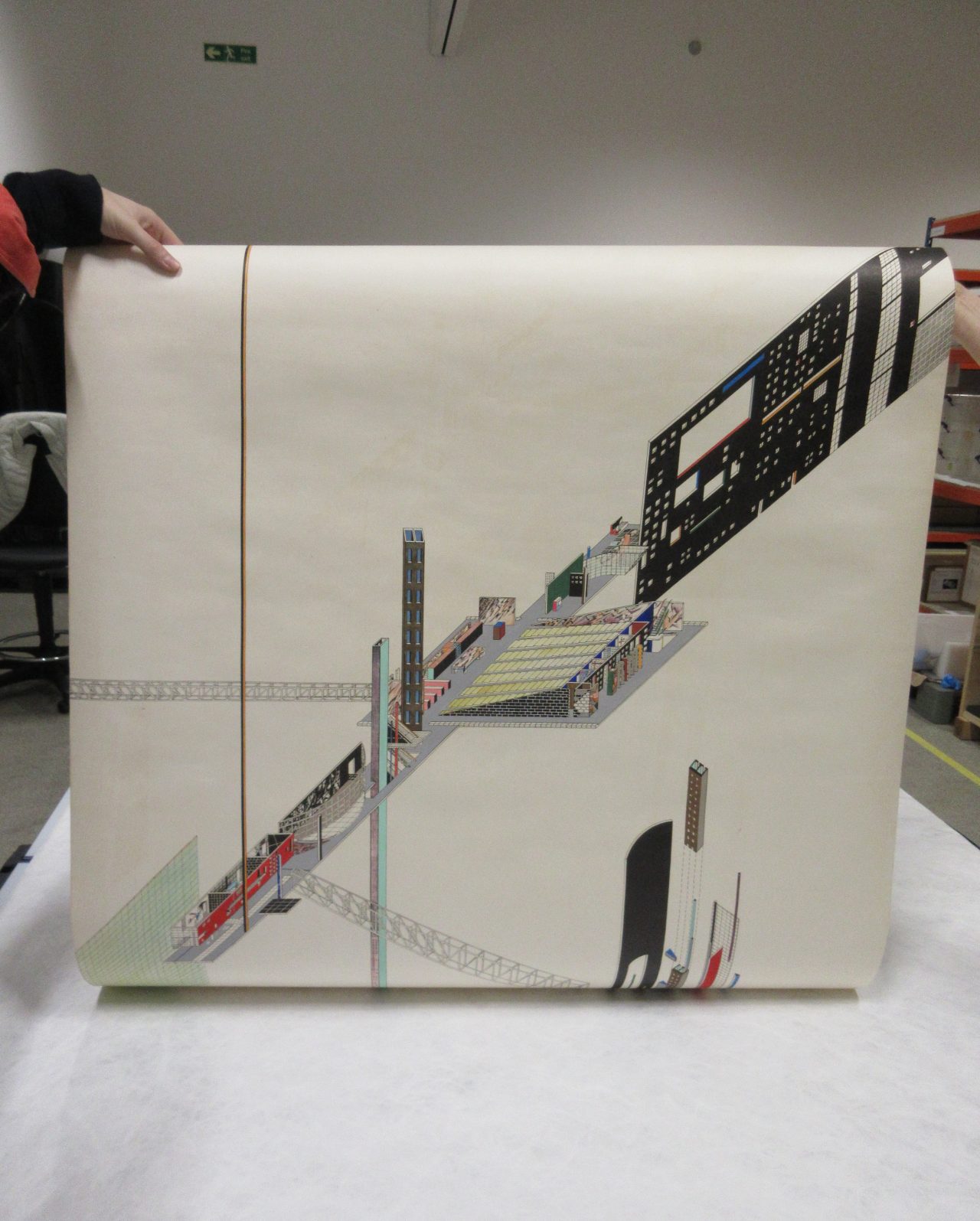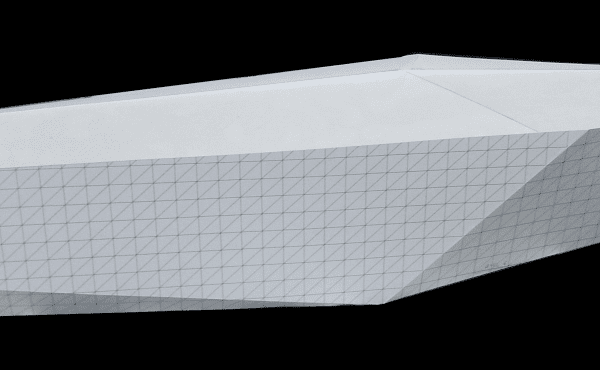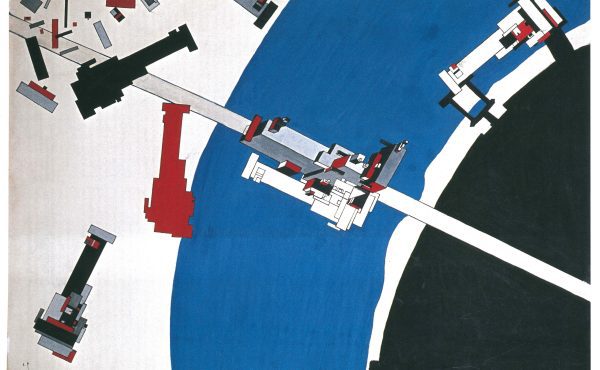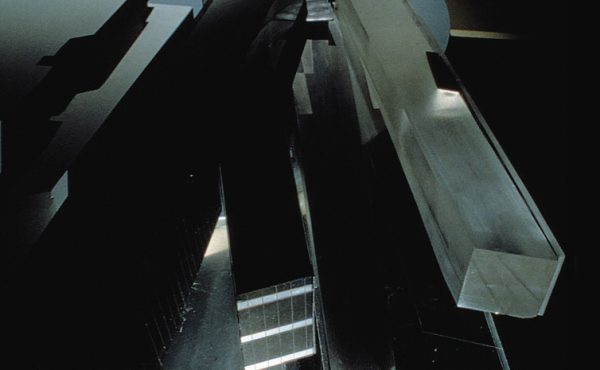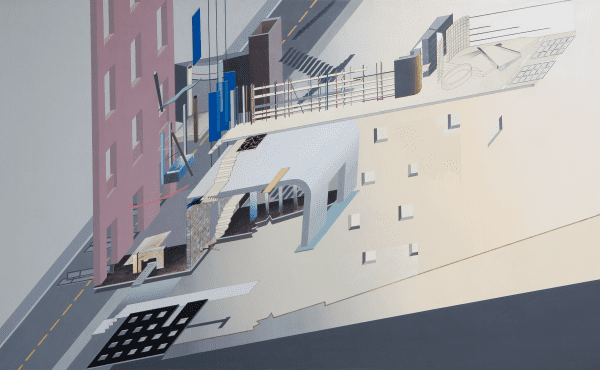Dutch Parliament Extension, The Ambulatory and its connection
The Hague, Netherlands
In 1978-79, Zaha Hadid was part of the Office for Metropolitan Architecture (OMA), led by her Unit 9 tutors at the Architectural Association, Rem Koolhaas and Elia Zenghelis. The competition entry for the Dutch Parliament Extension is the most substantial realisation of their brief collaboration within the practice. They proposed an extension to the historic Binnenhof complex that would allow parliament to have a distinct space from the government, rather than housed in close proximity. Its three parts, initially designed separately by Hadid, Koolhaas and Zenghelis, can be understood through the surrealist technique of the ‘exquisite corpse’, a game in which its participants have no knowledge of other contributions until they are revealed in a final composite at the end of play.
For the project, Koolhaas designed two ‘slabs’; one a horizontal glass brick ‘podium’ and the other vertical and raised on pilotis, referred to as a ‘skyscraper’. Hadid created an ambulatory that connected to the centre of the latter, with floors above providing spaces for political discussions, and below for parliamentary procedural matters. It led through into Zenghelis’ assembly hall, which served to unite the elected parliament with their public, and finished before the ‘smoke-filled room’. Hadid’s drawing, titled The Ambulatory and its connection, shows an exploded axonometric view of their collaborative work.
While OMA’s design process for the Dutch Parliament Extension was inspired by surrealism, Hadid’s fragmented depiction reveals the influence of the Soviet avant-garde on the project, particularly in its use of two converging axes and multiple viewpoints. Its recalls El Lissitzky’s Proun paintings (c. 1919-1927), which suggested the architectural potential of abstraction, as well as the formal possibilities offered by Malevich’s arkhitektons (c.1920-1930), which Hadid explored in her Unit 9 diploma project, Malevich’s Tektonik. Equally, the use of pilotis and glass bricks nod to the international style, evidencing the plurality of modernism explored by OMA at this time.
Design Team
Zaha Hadid, Rem Koolhas, Elia Zhengelis, Richard Perlmutter, Ron Steiner and E Veneris
